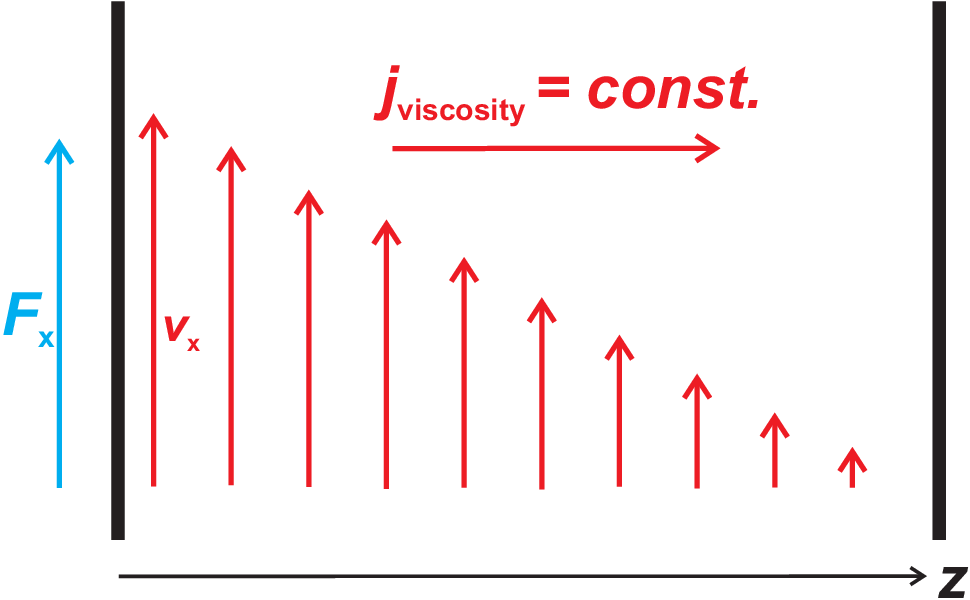
The standard definition of viscosity is illustrated in Fig. (4.6). One wall is moving in \(z\)-direction with speed \(v_z\), induced by a force \(F_z\). The second wall is fix. A linear reduction of speed \(v_z\) of the viscous liquid is observed implying a momentum current density flowing from left to right.

Experimentally a relation between force \(F_z\) and velocity \(v_z\) in z-direction is found to be
|
| \begin{equation*} F_x = \eta A \frac{v_x}{z} \quad , \label{large_visc} \end{equation*} | (4.70) |
where \(A\) is the cross section, \(x\) the distance between the two walls, and the viscosity \(\eta\) is a linear scaling factor. For small distances \(z\) the Eq. (4.70) translates into
|
| \begin{equation*} F_x = \eta A \frac{\partial v_x}{\partial z} \quad , \label{small_visc} \end{equation*} | (4.71) |
giving rise to the precise definition of the viscosity \(\eta\). The linear reduction of \(v_x\) in z-direction can easily be understood from the continuity equation (4.57) which for the above case (and adding sources and drains) reads
|
| \begin{equation*} \frac{\partial (\rho v_z)}{\partial t} = - \frac{\partial j_{viscosity}}{\partial z} \mbox{+ sources - drains .} \label{visc_cont} \end{equation*} | (4.72) |
here \(\rho = m / V\) is the mass density.
Temporal changes
of momentum are induced by forces; so possible sources and drains in Eq. (4.72) are additional forces. Since no such forces are applied we find for steady state, i.e. \(\partial (\rho v_x) / \partial t = 0\),
|
| \begin{equation*} 0 = \frac{\partial j_{viscosity}}{\partial z} \quad \text{, i.e.} \quad j_{viscosity} = const. \label{visc_linear} \end{equation*} | (4.73) |
So exactly as for diffusion in Eq. (4.56) a linear relation is found for which the continuity equation is the underlying reason.
© J. Carstensen (TD Kin II)